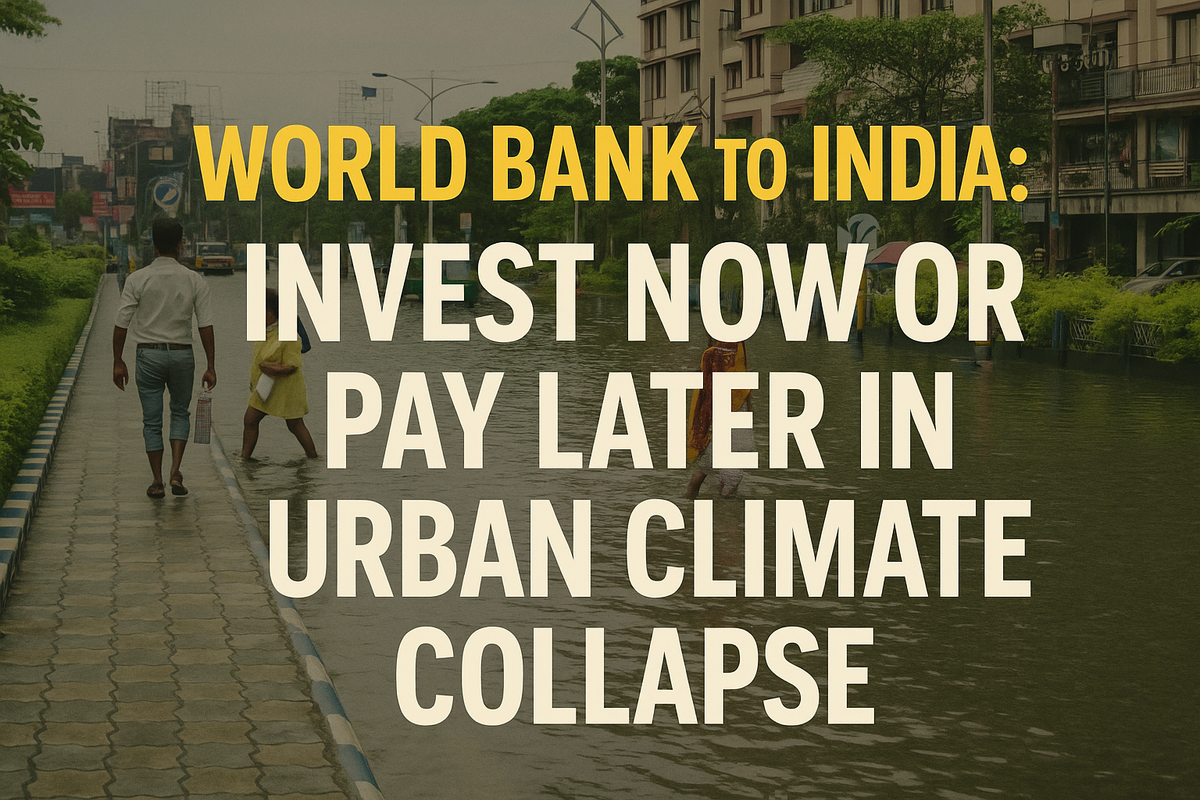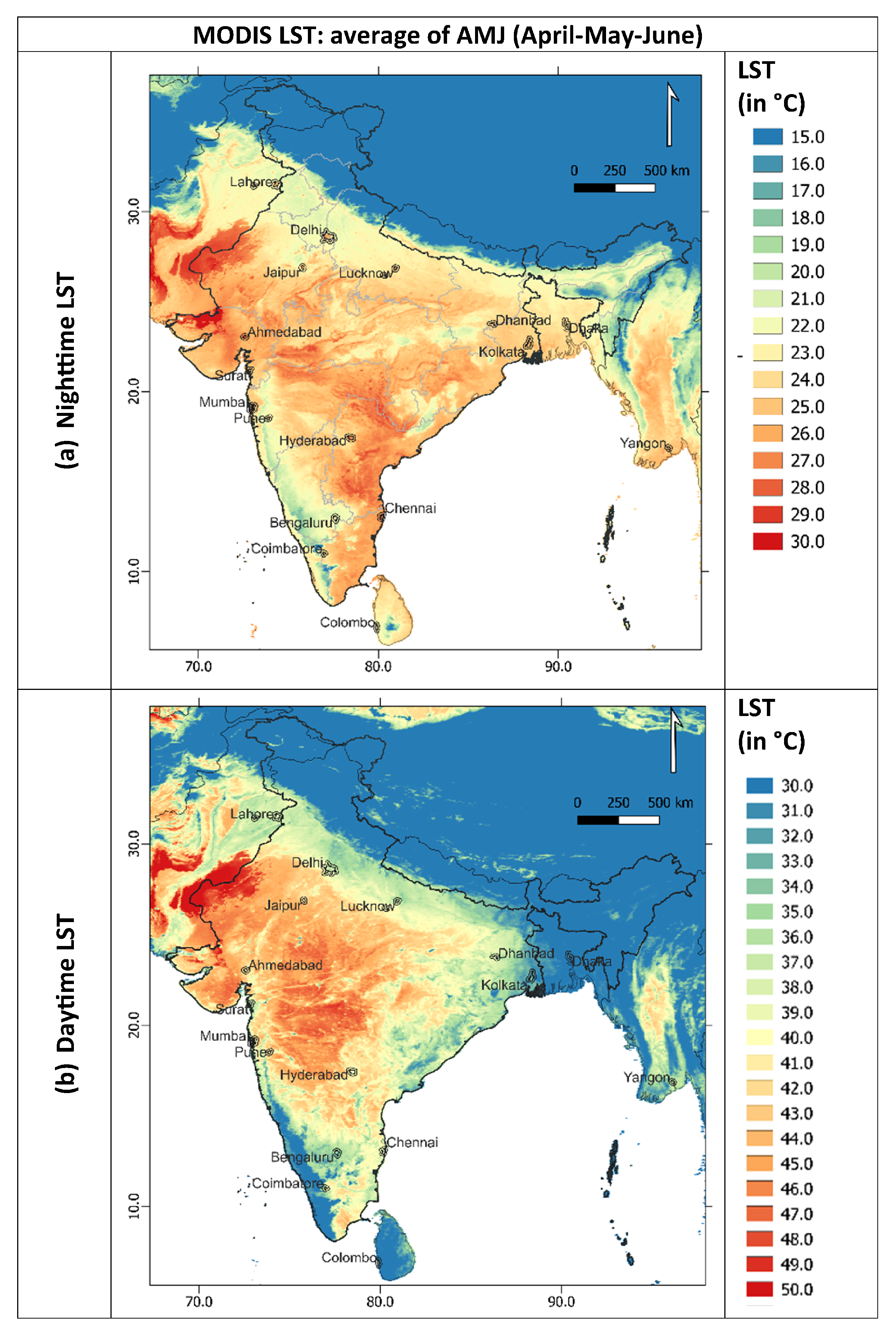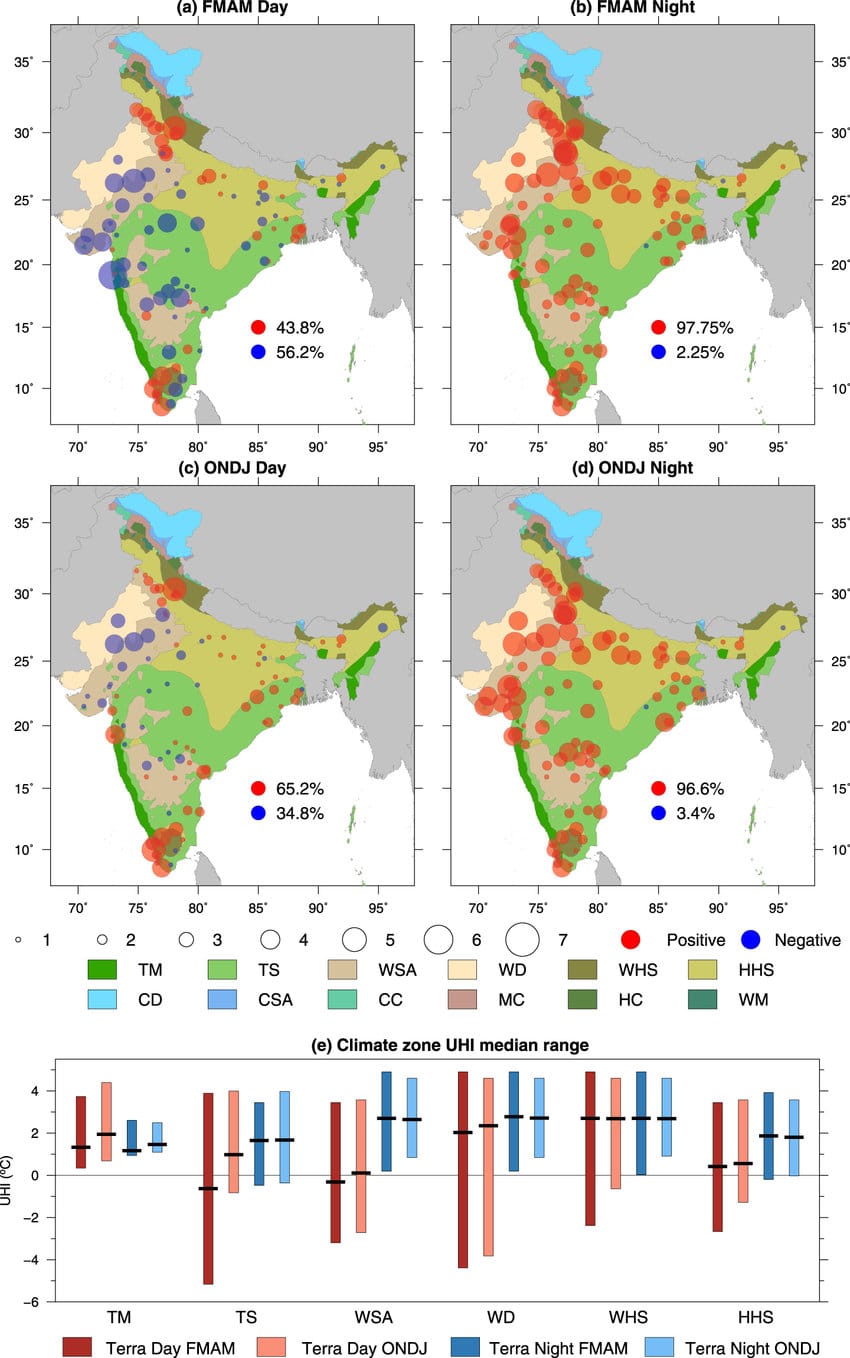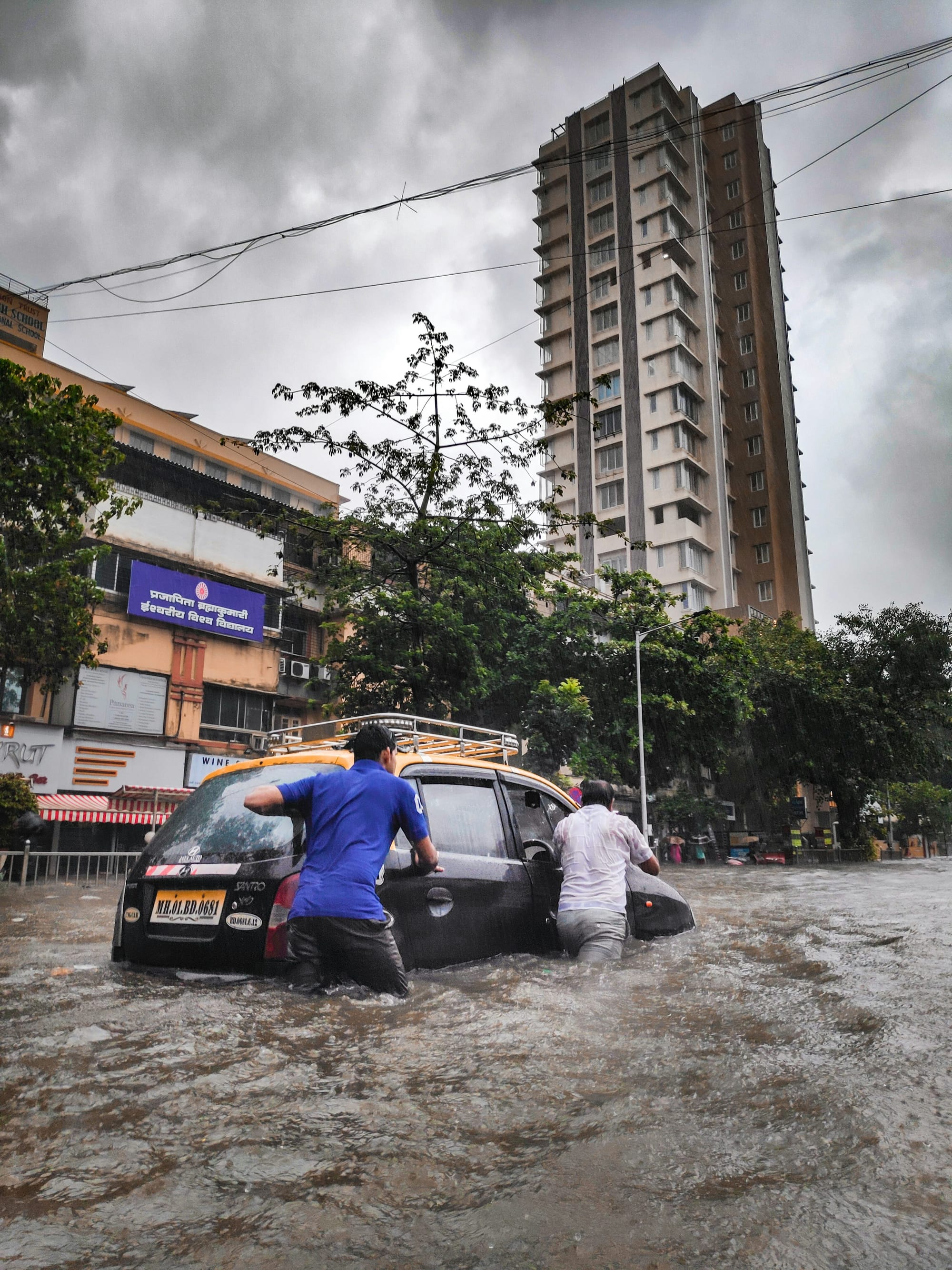️Urban Danger: World Bank Warns Indian Cities Face a Climate Deadline
India’s cities are racing against a climate deadline, says a new World Bank report. Explore the heatwaves, floods, and air pollution threatening metros like Delhi and Mumbai. Learn what reforms, resilience strategies, and global comparisons could prevent urban catastrophe.

Written by Lavanya, Intern, Allegedly The New
NEW DELHI, July 23, 2025
The Alarm Is Sounding
In its latest 2025 climate risk assessment, the World Bank has issued an urgent warning: India’s major cities are nearing a climate tipping point. Without bold and immediate reform, urban centers like Delhi, Mumbai, Kolkata, Chennai, and Hyderabad may face catastrophic consequences, ranging from deadly heatwaves to flooding that displaces millions.
The 230-page report, “Toward Climate-Resilient Urban Futures,” emphasizes a narrowing 10-year window for India to adapt or face irreversible damage. Based on satellite data, field studies, and economic forecasts, it identifies urban areas where failing infrastructure, uncontrolled growth, and environmental damage are worsening the crisis.
This isn’t just a scientific or policy issue; it’s a human issue. The poor, elderly, daily wage workers, and slum dwellers suffer from rising temperatures and inadequate drainage systems. Yet, cities continue to develop, not smartly, but unsustainably.
Delhi, Mumbai, and Chennai: Ground Zero for Urban Climate Risk
The World Bank report places Delhi at extreme risk from air pollution, heat island effects, and water shortages. As temperatures exceed 46°C in the capital, vulnerable populations, especially in slums, struggle with heatstroke, dehydration, and power outages.
Mumbai, once celebrated for its monsoon spirit, now faces annual climate emergencies. In 2024 alone, two major flooding events submerged key train routes and slums, killing 87 people and displacing over 300,000. The drainage systems remain largely unchanged from colonial designs.
Chennai, affected by both floods and droughts, presents a grim example of climate whiplash. In 2023, the city faced a paradoxical crisis where its streets were flooded, but drinking water was scarce due to saltwater intrusion.

Why This Is Happening: The Triple Threat
The World Bank identifies three interconnected drivers behind India’s urban climate vulnerability:
Overpopulation Meets Unregulated Expansion
India’s urban population is expected to grow by 416 million by 2050, but many cities are expanding without climate zoning, environmental approvals, or disaster resilience planning. Encroachment into wetlands, forests, and natural floodplains has left cities defenseless.
Weak Infrastructure and Legacy Systems
Many metropolitan areas still rely on outdated colonial-era infrastructure: old sewage systems, fragile power grids, and deforested catchment areas. Drainage failures during heavy rains are not flukes; they are engineered collapses.
Heat, Air, and Water: The Urban Trifecta
Urban heat islands, worsened by dark rooftops, concrete sprawl, and disappearing tree cover, make cities 2-5°C hotter than rural areas. Air pollution from vehicles and industries suffocates residents, while water tables drop faster than they can be replenished.
Who Gets Hit the Hardest?
The climate crisis in Indian cities does not affect everyone equally. The urban poor, especially slum dwellers and migrant laborers, bear the greatest burden.
“Our roof heats like an oven by noon. Fans don’t help. There’s no green shade anywhere,” says Shabana, a resident of the Seelampur slum in Delhi.
Daily Wage Workers: Construction workers and delivery riders face risks of heatstroke. Many work outdoors in temperatures above 45°C with no health insurance.
Elderly & Children: Asthma, dehydration, and strokes are rising among vulnerable age groups. Delhi saw a 27% increase in heat-related hospitalizations among the elderly in 2024.
Displaced Villagers: Climate change is driving rural-to-urban migration, straining already insufficient housing and job opportunities. These groups often end up in informal settlements, worsening urban vulnerability.
Is the Smart Cities Mission a Smart Move?
India’s much-publicized Smart Cities Mission, launched in 2015, aimed to transform urban development through technology and sustainability. However, critics argue that while the mission added infrastructure, it did not focus on resilience.
“Many Smart Cities concentrated on Wi-Fi and streetlights instead of climate zoning, drainage upgrades, or restoring green spaces,” says Prof. Radhika Iyengar, an urban planner at Columbia University.
World Bank data shows that only 27% of Smart Cities funds went toward environmental risk management. Most projects focused on superficial improvements.

Satellite Maps Don't Lie: Data from Space Confirms the Crisis
With help from NASA MODIS and ESA Copernicus, the World Bank overlaid data on urban heat islands, air quality, and land encroachment. The findings are alarming:
- Delhi: Largest heat island effect in South Asia
- Mumbai: 43% loss of green cover since 2001
- Kolkata: Toxic air and flood-prone neighborhoods intersect across 17 wards
- Ahmedabad: Fastest groundwater depletion among Tier-1 cities
These maps show correlations between heat deaths, asthma outbreaks, and flood displacements with poor urban planning, visually confirming what activists have been saying for years.
Global Best Practices India Should Learn From
The World Bank encourages Indian policymakers to learn from successful adaptations around the world:
Amsterdam: Floating homes and bike-first infrastructure ease flood stress.
Singapore: Vertical gardens, green roofs, and a comprehensive “City in Nature” master plan.
Tokyo: Heat-resilient buildings and earthquake-safe, multi-tiered drainage systems.
India needs to shift from temporary fixes to climate-first master plans.
Where’s the Climate Money?
Despite a $1.5 billion pledge from the Green Climate Fund and other international donors, only 42% of the promised climate funds have reached local governments. Bureaucracy, lack of transparency, and poor fund management hinder the system.
Meanwhile, climate change costs India an estimated $171 billion in GDP each year due to lost productivity, recovery costs, and health impacts.
The Quiet Uprising: Grassroots Resistance
Amid the policy gridlock, India’s youth and communities are fighting back:
- Bangalore’s Rainwater Brigades teach residents how to harvest rainwater.
- In Ahmedabad, the Slum Resilience Task Force is testing solar-reflective paint on rooftops.
- Delhi’s “TreeTaggers” movement digitally maps endangered trees and organizes local protests when they are at risk of being cut down.

What Must Change in the Next 10 Years?
The World Bank outlines a serious 10-year climate survival plan for Indian cities:
- Mandate urban climate zoning laws that prevent encroachment on wetlands and floodplains.
- Invest $200 billion in green infrastructure, including urban forests, permeable pavements, and stormwater tunnels.
- Decentralize climate funds to local agencies and require public audits.
- Retrofitting buildings with heat-reflective materials and water-saving designs.
- Create migration resilience hubs in suburban areas to accommodate displaced rural populations.
- Launch climate awareness campaigns that reach beyond elite circles and engage everyday citizens.
Failure to act could lead to 15 million climate-displaced people in India by 2040, placing unimaginable stress on cities that are already strained.
What Lies Ahead: Not Just Weather, But a War for Urban Survival
The World Bank’s report is not just a prediction; it’s a countdown. Every day that India delays reform brings it closer to irreversible urban failure. Yet, within this crisis lies a chance to redefine urban growth, not centered around malls and highways, but around sustainability and equity.
Urban Futures or Urban Failures?
If cities are engines of growth, how can India ensure they don’t become graveyards of climate failure? What role should citizens, not just governments, play in reshaping the urban future?




